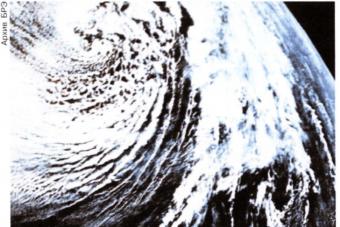Astringents- these are agents that seal the surface layer of the mucous membranes and skin, forming a film that protects sensitive nerve endings from irritation. They produce:
Analgesic effect (reduction of pain in inflammatory processes)
Anti-inflammatory effect (narrowing of the vessel, decrease in their permeability, decrease in the manifestations of the exudative process);
Decreased secretion of the digestive glands.
Astringents include preparations of organic (vegetable) origin (tannin, oak bark, St.
Tannin- halotannic acid, which is obtained from ink nuts, that is, growths on the shoots of Asia Minor oak and sumac. Assign for external use in the form of a solution and ointment for inflammatory processes of the skin and mucous membranes.
Oak bark contains 8% tannins, which determine its astringent effect. A decoction of oak bark is used to treat inflammation of the oral cavity, bleeding gums, and burns.
Sage drug. In medical practice, the leaves of the plant are used, which are stored in tightly closed containers. In the leaves of sage are volatile oils, alkaloids, tannins, flavonoids, exhibit astringent, anti-inflammatory, disinfectant action. It is used as an effective remedy for rinsing the mouth and throat with gingivitis, stomatitis, laryngitis, pharyngitis.
St. John's wort, blueberries, chamomile flowers, and the like also have an astringent effect. they are used in inflammatory processes of the mouth and throat, and are also taken orally for colitis, peptic ulcer of the stomach and duodenum.
Bismuth nitrate basic- astringent of inorganic origin. Assign for external use in the form of ointment and powder for inflammatory processes of the skin; inside - with peptic ulcer of the stomach and duodenum, enteritis, colitis. Combined preparations are also widely used - tablets Vikalin, Vikair, as well as bismuth subcitrate.
Denol(ventrisol) - astringent of inorganic origin. The drug has an astringent, antacid, cytoprotective effect, and also has an antibacterial effect in pylori. Applied with peptic ulcer of the stomach and duodenum, chronic gastroduodenitis. The drug is well tolerated, but nausea and vomiting are possible. Do not use in severe kidney disorders and during pregnancy.
Xeroform contains 50-55% bismuth oxide. Applied externally as an astringent and antiseptic in the form of powder, powder and ointment (3-10%) for skin diseases.
Obvolical means
Obvolical means- these are indifferent substances of plant origin that are capable of forming sticky liquids in water - mucus that covers the mucous membranes or skin with a protective film and protects them from irritation.
Assign obvolical means:
In inflammatory and ulcerative processes on the mucous membrane of the digestive tract;
In case of poisoning with acids, bases and the like;
To reduce the irritating effect of drugs. Obvolikalnu means include: starch, flax seeds, rhizomes and roots of marshmallow officinalis, as well as products - milk, egg white, decoctions of oatmeal.
Starch- adsorptive agent in the form of powders and obvolikalny - in the form of mucus.
Indications for use: prescribed for external use in the form of powder and paste for the treatment of dermatitis inside - in the form of mucus for the treatment of ulcers, inflammatory processes in the digestive canal; in case of poisoning with acids, alkalis and salts of heavy metals; in the form of a medicine - to reduce the irritating effect of certain drugs and slow their absorption.
Flax seeds produces an obvolical, laxative effect. Assign for external use in the form of mucus in acute inflammatory processes (abscess, furuncle, lymphadenitis, myositis, synovitis, bureitis, arthritis, etc.); inside - with gastritis, peptic ulcer of the stomach and duodenum.
Contraindications: active forms of tuberculosis; in the presence of a wound surface and in case of bleeding, one should not make poultices from flax seeds.
marshmallow root contains mucous and pectin substances, starch and the like. Assign in the form of infusion and medicine. Shows obvolicalno and anti-inflammatory action.
Indications for use: inside, 1 tablespoon of infusion or mixture every 2 hours or 4-6 times a day after meals for acute laryngitis, fariigiti, tracheitis, acute and chronic bronchitis, bronchopneumonia, catarrh of the upper respiratory tract, whooping cough.
Pharmacology: lecture notes Valeria Nikolaevna Malevannaya
3. Astringents
3. Astringents
Astringents, when applied to mucous membranes, cause coagulation of proteins, the resulting film protects the mucous membrane from irritating factors, pain decreases and inflammation is weakened.
This effect is exerted by many substances of plant origin, as well as weak solutions of salts of certain metals.
Tannin(Ta n i n u m).
gallodubic acid. It has astringent and anti-inflammatory action.
Application: stomatitis, gingivitis, pharyngitis (1-2% solution for rinsing (3-5 times a day), externally for burns, ulcers, cracks, bedsores (3-10% solutions and ointments), poisoning with alkaloids, heavy salts metals (0.5% aqueous solution for gastric lavage).
Release form: powder.
Tansal(Tansal).
Composition: tanalbine - 0.3 g, phenyl salicylate - 0.3 g. Astringent and disinfectant.
Application: acute and subacute enteritis and colitis (1 tablet 3-4 times a day).
Release form: tablets number 6.
Hypericum herb(Herba Hyperici).
Contains tannins such as catechins, hyperoside, azulene, essential oil and other substances.
Application: as an astringent and antiseptic for colitis in the form of a decoction (10.0-200.0 g) 0.3 cups 3 times a day 30 minutes before meals, for rinsing the mouth in the form of a tincture (30-40 drops per glass of water) .
Release form: chopped grass 100.0 g each, briquettes 75 g each, tincture ( Tinctura Hyperici) in vials of 25 ml.
Oak bark(Cortex Quecus).
Application: as an astringent in the form of an aqueous decoction (1:10) for rinsing with gingivitis, stomatitis and other inflammatory processes of the oral cavity, pharynx, larynx, externally for the treatment of burns (20% solution).
In medical practice, infusions and decoctions of such plants are also used: serpentine rhizome ( Rhizoma Bistortae), rhizome and root of burnet ( Rhizoma cum radicibus Sanguisorbae), alder seedlings ( Fructus Alni), sage leaves ( Folium salviae), the drug from it is salvin ( Salvinum), chamomile flowers ( Flores Chamomillae), a preparation from chamomile; romazulan ( Romasulon), blueberries ( Baccae Murtilli), cherry fruits ( Baccae Pruni racemosae), Potentilla rhizome ( Rhizoma Tormentillae), succession grass ( Herba Bidentis).
Metal salts. Bismuth preparations.
Bismuth nitrate basic(Bismuthi subnitras).
Application: as an astringent, weak antiseptic, fixing agent for gastrointestinal diseases, it is prescribed orally at 0.25-1 g (for children, 0.1-0.5 g) per reception 4-6 times a day 15-30 minutes before meals.
Side effects: with prolonged use in high doses, methemoglobinemia is possible.
Release form: powder, which is part of the Vikair tablets, used for gastric and duodenal ulcers, and Neo-Anuzol suppositories, which are used for hemorrhoids.
Xeroform(xeroformium).
Applied externally as an astringent, drying and antiseptic agent in powders, powders, ointments (3-10%). Included in the balsamic liniment (Vishnevsky ointment)
Dermatol(Dermatolum).
Synonym: Bismuthi subgallas. Applied as an astringent, antiseptic and drying agent externally for inflammatory diseases of the skin, mucous membranes in the form of powders, ointments, suppositories.
Release form: powder.
Lead preparations: lead acetate ( Plumbi acetas) - lead lotion - 0.25% solution.
Aluminum preparations: Alum ( Alumen). Used as an astringent and hemostatic agent (0.5–1% solution).
Alum burnt(Alumen ustum).
As an astringent and drying agent in the form of a powder included in the powder.
This text is an introductory piece.LECTURE No. 11. Drugs acting on peripheral neurotransmitter systems. Drugs acting on peripheral cholinergic processes 1. Drugs acting primarily on peripheral neurotransmitter systems B
LECTURE No. 15. Means acting in the field of sensitive nerve endings. Means that reduce the sensitivity of nerve endings 1. Local anesthetics The drugs of this group selectively block the process of transmission of excitation in the efferent nerves and
4. Enveloping agents and adsorbent agents
2. Products containing essential oils. bitterness. Means containing ammonia Means containing essential oils. Eucalyptus leaf (Folium Eucalypti). Application: decoction and infusion of eucalyptus as an antiseptic for rinsing and inhalation with ENT diseases, as well as for treatment
46. Astringents When applied to mucous membranes, astringents cause coagulation of proteins, the resulting film protects the mucous membrane from irritating factors, pain sensations are reduced and inflammation processes are weakened. Such an action is
47. Enveloping agents and adsorbent agents
48. Products containing essential oils. bitterness. Means containing ammonia Means containing essential oils. Eucalyptus leaf (Folium Eucalypti). Application: decoction and infusion of eucalyptus as an antiseptic for rinsing and inhalation with ENT diseases, as well as for treatment
MOISTURIZING AND AstrINGENT EYE PREPARATIONS Used for the "dry eye" syndrome. Substances that increase viscosity include cellulose derivatives (0.5–0.1% polyvinyl glycol, polyvinylporrolidone, 0.9% polyacrylic acid derivatives. Substitutes
X. Household goods X. Household goods (suspended). Saucer. Medicines are prepared in it. Bottles. Some “compositions” and other medicines are prepared and stored in them. Ordinary water is used to prepare decoctions, broths,
Astringent and tanning plants If your hand skin is oily and you are tired of fighting it, using various kinds of cosmetics to cleanse the skin of the abundant secretion of fatty grease, which clogs the pores, causing sore acne
COUGH MEDICINES For coughing, the following expectorants are used to thin and better sputum discharge. Breast elixir. Drugs are taken orally; children under 1 year are prescribed 1 - 2 drops 2 - 3 times a day, children older than a year - the number of drops per reception,
Fortifying agents. Means that regulate metabolism - Take a pinch of blackthorn flowers and dandelion inflorescences, pour 1 glass of boiling water, let it brew, strain, add 1 tbsp. a spoonful of apple cider vinegar. Drink warm before going to bed.- For a restorative bath
Hand products For chapped skin Boil 5 potatoes, grind into a pulp, add 5 tbsp. l. milk. Apply warm gruel on the skin and hold for 10 minutes, make an energetic massage. Wash hands with cold water and apply cream. You can just dip your hands into this gruel until
Astringents- These are drugs that cause, when applied to the skin, mucous membranes or wound surface, compaction of colloids of extracellular fluid, mucus, exudate, cell surfaces. In this case, a film is formed that protects the endings of sensory nerves from irritation. As a result, local vasoconstriction occurs, their permeability decreases and exudation decreases. In this regard, astringents have a local anti-inflammatory and weak anesthetic effect.
Astringents are used externally in the form of lotions, lubrications, rinses, douches, powders for inflammatory lesions of the skin and mucous membranes, as well as inside for some diseases of the gastrointestinal tract (gastric and duodenal ulcers, enteritis, colitis).
Distinguish between astringents of plant origin and synthetic.
Astringents of plant origin. Oak bark, St. John's wort, blueberries and some other medicinal plants, as well as preparations derived from them, such as tannin, tanalbin, etc.
Oak bark (Cortex Quercus) is used as a decoction (1:10) for rinsing with gingivitis, stomatitis and other inflammatory lesions of the oral cavity, pharynx, pharynx, larynx.
St. John's wort (Herba Hyperici) is used internally as an astringent and antiseptic for colitis, topically - to lubricate the gums and rinse the mouth in the treatment of gingivitis and stomatitis. Assign in the form of infusion (1:20) or tincture. For the preparation of infusion at home, briquettes of St. John's wort weighing 75 g, divided into 10 equal slices, are convenient. One slice is poured with a glass of boiling water and boiled for 10 minutes, after which the infusion is cooled and filtered. Take orally 1/3 cup 3 times a day or as a mouthwash.
St. John's wort tincture is prescribed inside 40-50 drops 3-4 times a day, and for rinsing - 30-40 drops per 1/2 cup of water. Release form: in bottles of 25 and 100 ml.
Chamomile flowers (Flores Chamomillae) are used as a medicinal tea or infusion, 1-5 tablespoons 2-3 times a day or in enemas for intestinal cramps, diarrhea, flatulence. Outwardly appoint for rinsings, lotions and baths. At home, tea is prepared at the rate of 1 tablespoon of chamomile flowers in a glass of boiling water. Before use, the tea is cooled and filtered.
Romazulon (Romasulon) - a liquid containing extract and essential oil of chamomile. Used for rinsing, washing and compresses with stomatitis, gingivitis, vaginitis, urethritis, cystitis, trophic ulcers, inflammation of the outer ear. For external use, the drug is diluted at the rate of 1.5 tablespoons per 1 liter of water. Inside the drug is prescribed for gastritis, colitis, flatulence, 0.5 teaspoons per 1 cup of hot water. Release form: in bottles of 100 ml.
Tannin (Tanninum) - gallotannic acid obtained from growths on young shoots of Asia Minor oak or from domestic plants - sumac and skumpii. It is used for inflammatory processes of the oral cavity, pharynx, larynx in the form of rinses (1-2% aqueous or glycerin solutions) and lubrication (5-10% solutions), as well as for burns, ulcers, bedsores, cracks (in the form of 3-10% ointments, solutions). Release form: powder.
Tanalbin (Tannalbinum) - a product of the interaction of tannins from the leaves of sumac and skumpii with protein. When taken orally, tanalbin is broken down in the intestines with the release of free tannin, which has an astringent effect on the intestines. Therefore, tanalbin is used in acute and chronic intestinal diseases accompanied by diarrhea. Adults are prescribed 0.3-1 g per dose 3-4 times a day; children - 0.1-0.5 g, depending on age. Release form: tablets of 0.5 g.
A series of grass (Herba Bidentis) is used as an infusion (at the rate of 7.5 g of herb per glass of boiling water) for baths with diathesis in children. Briquettes are produced from the grass of a series weighing 75 g, divided into 10 slices of 7.5 g each or in the form of round briquettes of 7.5 g each.
Bird cherry fruit (Vassae Pruni racemosae) is indicated for diarrhea in the form of an infusion or decoction (1: 20) 1/4-1/2 cup 2-3 times a day.
Bilberry fruit (Fructus Myrtilli) is used as an infusion or decoction (1-2 teaspoons per 1 cup of boiling water), as well as in the form of blueberry jelly for diarrhea.
Sage leaf (Folium Salviae) is used as an infusion for rinsing the mouth and throat. At home, the infusion is prepared at the rate of 1 tablespoon of leaves per glass of boiling water. After infusion for 20 minutes, the infusion is cooled and filtered.
Synthetic binders. Synthetic astringents include some inorganic (basic bismuth nitrate, alum, and so on) and organic (dermatol, xeroform) compounds of a number of metals and metalloids.
Medicinal plants:
Diarrhea(from Greek. diarrhoea- expire), or diarrhea, is a stool disorder characterized by the release of liquid stools, which is associated with the accelerated passage of intestinal contents. The causes of diarrhea can be increased intestinal motility, impaired absorption of water in the large intestine, and the secretion of a significant amount of mucus by the intestinal wall. In most cases, diarrhea is a symptom of acute or chronic colitis, enteritis. Infectious diarrhea is observed in dysentery, salmonellosis, food poisoning, viral diseases (viral diarrhea), amoebiasis, etc.
Diarrhea can be a symptom of food poisoning and can be caused by an unhealthy diet or an allergy to certain foods. Diarrhea develops when the digestion of food is disturbed due to a lack of certain enzymes. Toxic diarrhea accompanies uremia, mercury poisoning, arsenic. Drug-induced diarrhea can occur when beneficial bacteria in the intestines are suppressed and dysbacteriosis develops. Diarrhea can occur under the influence of excitement, fear (the so-called bear disease).
The frequency of stool with diarrhea is different, bowel movements - watery or mushy. With diarrhea, there may be pain in the abdomen, a feeling of rumbling, transfusion, bloating, nausea, vomiting, and fever.
Diarrhea can have not only different causes, but also different meanings for the well-being of the body. Light and short-term diarrhea have little effect on the general condition of patients, severe and chronic - lead to exhaustion, hypovitaminosis, pronounced changes in the organs.
Antidiarrheal drugs include symptomatic drugs that eliminate diarrhea by inhibiting intestinal motility and contraction of its sphincters or weakening the irritating effect on the intestinal mucosa of its contents. As pathogenetic treatment consider the elimination of intestinal dysbacteriosis.
Symptomatic remedies of plant origin include remedies better known under the historically established name "astringents", or "fixing".
Astringents are substances capable of coagulating proteins on the surface of the mucous membrane. Coagulated proteins form a film that protects the endings of afferent (sensory) nerves from the effects of local damaging factors. Getting into the intestines, astringents prevent irritation of the sensitive nerve endings, therefore, they cause a decrease in peristalsis, that is, they have a “fixing” effect, while reducing the feeling of pain. In addition, under the influence of biologically active substances with astringent action, local vasoconstriction, a decrease in their permeability, a decrease in exudation and inhibition of enzymes occur. The combination of these effects prevents the development of diarrhea and inflammation, which served as a possible cause of diarrhea. Thus, astringents of plant origin also have anti-inflammatory properties.
Astringents of plant origin form insoluble compounds with proteins, alkaloids, cardiac and triterpene glycosides, salts of heavy metals, thereby preventing their absorption, so they can be used as antidotes for poisoning with these substances. Astringents also have antiseptic, antimicrobial and hemostatic properties. At high concentrations of astringents, irreversible damage to living cells occurs. This type of action is called cauterizing.
The biologically active substances of plant origin, which have an astringent effect, include tannins.
The action of astringents is short and reversible, to achieve the result they are used repeatedly (2 to 6 times a day) in the form of infusions or decoctions. To avoid excessive or unnecessary deposition of tannins on the gastric mucosa, they are taken either after meals or in the form of compounds with proteins (tanalbin drug). In this case, they are released only in the middle and lower sections of the small intestine and enter the large intestine as active drugs. As antimicrobial and astringent agents for diarrhea of microbial etiology, they are prescribed 30-60 minutes before meals.
Astringents are used in dermatology in the treatment of superficial lesions of the skin and mucous membranes, for rinsing in case of diseases of the mucous membranes of the oral cavity and upper respiratory tract.
Medicinal plant materials containing tannins include: badan rhizomes, oak bark, serpentine rhizomes, burnet rhizomes and roots, cinquefoil rhizomes, alder seedlings, bird cherry fruits, blueberry fruits and shoots.
Badan rhizomes - Rhizomata Bergeniae
Badan thick-leaved - Bergenia crassifolia(L.) Fritsch.
Family saxifrage - Saxifragaceae.
Botanical description. Perennial herbaceous plant 10-50 cm high (Fig. 3.7). The rhizome is fleshy, creeping with numerous thin adventitious roots. The leaves are whole, naked, leathery, hibernating, collected in a basal rosette. The leaf blade is broadly elliptical, the apex is rounded, the base is heart-shaped or rounded, the edge with large blunt teeth. The length of the leaf blade is 10-35 cm (usually exceeds the length of the petiole), the width is 9-30 cm. Flowers with a lilac-pink corolla are collected at the top of a leafless peduncle in a dense paniculate corymbose inflorescence. The fruit is a box.
Blossoms in May-July, before the appearance of young leaves, the fruits ripen in July-early August.
Badan thick-leaved grows in the south of Siberia: in Altai, in the Kuznetsk Alatau, in the Western and Eastern Sayans, in the Tuva Republic, the Baikal and Transbaikalia.
Habitat. Badan is found in the forest, subalpine and alpine belts at an altitude of 300 to 2000 m above sea level on well-drained stony soils. Abundant in dark coniferous forests, where it often forms dense thickets.
Rice. 3.7. Badan thick-leaved - Bergenia crassifolia(L.) Fritsch.:
1 - flowering plant; 2 - rhizome with roots
blank. The rhizomes are dug up in the summer, in June-July, cleaned from the ground, cut off small roots, remove the remnants of the aerial part, cut into pieces up to 20 cm long and delivered to the place of drying. Rhizomes left in heaps for more than 3 days rot.
Security measures. To preserve the thickets, it is necessary to leave 10-15% of the plants intact during harvesting.
Drying. Before drying, the rhizomes are dried, and then dried in dryers at a temperature of 50 ° C to an air-dry state.
External signs of raw materials. Whole raw material - pieces of cylindrical rhizomes up to 20 cm long and up to 2 cm thick. Their surface is dark brown, slightly wrinkled, with rounded traces of cut roots and scaly remnants of leaf petioles. The fracture is granular, light pink or light brown. On the fracture, the narrow primary cortex and vascular bundles are clearly visible, located in a discontinuous ring around the wide core. There is no smell. The taste is strongly astringent.
Storage. In a dry, well ventilated area. Shelf life - 4 years.
Chemical composition. Tannins (up to 25-27%), arbutin, catechin, catechin gallate, isocoumarin bergenin, phenolic acids and their derivatives, starch.
Badan rhizome is used in the form of a decoction as an astringent, hemostatic, anti-inflammatory and antimicrobial agent for colitis, enterocolitis, stomatitis, gingivitis and cervical erosion. Badan rhizomes serve as a medicinal plant raw material for obtaining a liquid extract.
Side effects. Prolonged use of bergenia rhizome drugs inhibits the secretion of gastric juice and inhibits the development of normal microflora in the intestine.
Contraindications.
Oak bark - Cortex Quercus
Common Oak (Pedunculate Oak) - Quercus robur L. (= Quercus pedunculata Ehrh.).
Rock Oak - Quercus petraea(Mattuschka) Lebl. (= Quercus sessiliflora Salisb.).
beech family - Fagaceae.

Rice. 3.8. Common Oak (Pedunculate Oak) - Quercus robur L. (= Quercus pedunculata Ehrh.):
1 - branch of a flowering plant; 2 - branch with leaves; 3 - fruits (acorns); 4 - segments of the bark
Botanical description. Common oak- a tree up to 40 m tall (Fig. 3.8). Young shoots are olive-brown, then silver-gray, somewhat shiny - “mirror-like”; the bark of old branches is dark gray, deeply fissured. Leaves with short (up to 1 cm) petioles, obovate in outline, pinnately lobed, with 5-7 (9) pairs of lobes. Flowers are dioecious. The fruit is an acorn, naked, brownish-brown with a cup-shaped or saucer-shaped cupule.
Flowering in April-May, fruiting in September-October.
Rock Oak differs from common oak primarily in the petiole, the length of which is 1-2.5 cm.
Geographic distribution. Common oak grows in the European part of the CIS, in the Crimea, in the Caucasus. Rock oak grows on the slopes of the mountains of the North Caucasus, in the Crimea and some regions of Ukraine.
Habitat. Common oak is the main forest-forming species of broad-leaved forests. In the north and east of its range, the common oak is often found in coniferous forests. Widely cultivated.
blank. The bark is harvested during the sap flow period, from April to June. On young trunks and branches, circular cuts are made with a knife at a distance of about 30 cm from one another and then connected with one or two longitudinal cuts. In the case when the bark is removed with difficulty, the incision is hit with wooden mallets or sticks.
Security measures. Oak harvesting is carried out according to special permits of the forestry enterprises at the felling sites and at the cutting areas.
Drying. The bark is laid out in a thin layer on cloth or paper and dried under sheds or in ventilated attics, stirring daily. The bark can be dried in the sun. Usually the raw material dries out in 7-10 days, it should not be exposed to rain or heavy dew. The dried raw material does not bend, but breaks with a bang. The yield of dry raw materials is 45-50% of freshly harvested.
External signs of raw materials. Whole raw material - tubular, grooved or in the form of narrow strips of bark pieces of various lengths, about 2-3 mm thick (up to 6 mm). The outer surface is shiny ("mirror-like"), rarely matte, smooth or slightly wrinkled, sometimes with small cracks; often visible transversely elongated lenticels. Inner surface with numerous longitudinal thin prominent ribs. In the fracture, the outer bark is granular, even, the inner bark is strongly fibrous, splintery. bark color
outside light brown or light gray, silvery, inside - yellowish-brown. The smell is weak, peculiar, intensifying when the bark is wetted with water. The taste is strongly astringent.
Shredded raw materials - pieces of bark of various shapes passing through a sieve with holes with a diameter of 7 mm.
Powder - yellowish-brown color, passing through a sieve with holes of 0.5 mm.
Storage. In a dry, well ventilated area. Shelf life - 5 years.
Chemical composition. Tannins (8-12%), phenols, catechins, flavonoids, triterpene compounds of the dammarane series.
Application, medicines. Oak bark is used to obtain a decoction (1: 10), which is used as an astringent for inflammatory diseases of the oral cavity, pharynx, pharynx, larynx. Sometimes prescribed externally as a 20% decoction for the treatment of burns. Oak bark is a part of preparations stomatophyte and stomatophyte A, which are used for inflammatory diseases of the oral cavity, bleeding gums and as an aid in periodontal disease.
Side effects. With prolonged rinsing of the oral cavity, a significant deterioration in smell is sometimes observed.
Contraindications. Intestinal diseases with a tendency to constipation.
serpentine rhizomes - Rhizomata Bistortae
Highlander serpentine (large serpentine) - Polygonum bistorta L. (= Bistorta major S. F. Gray).
Highlander meat-red (serpentine meat-red) - Polygonum carneum C. Koch (= Bistorta carnea(C. Koch) Kom.).
Buckwheat family - Polygonaceae.
Botanical description. Highlander snake- a perennial herbaceous plant with a short, thick, serpentine-curved rhizome and numerous adventitious roots (Fig. 3.9). There are usually several stems. They are erect, naked, unbranched, 30 to 150 cm high. Basal leaves with long winged petioles, stem leaves - alternate, petiolate, oblong or oblong-lanceolate, with tubular brown funnels without cilia. Leaves with a slightly wavy margin, glabrous or slightly pubescent above, gray-gray, shortly pubescent on the underside. The flowers are small, often pink, with a five-part simple perianth, collected at the end of the shoot in a large oval or cylindrical dense spike-shaped inflorescence. The fruit is a trihedral nut.

Rice. 3.9. Highlander serpentine (large serpentine) - Polygonum bistorta L. (= Bistorta major S. F. Grey):
1 - the upper part of a flowering plant; 2 - rhizome with roots and basal leaves; 3 - flower; 4 - flower in longitudinal section; 5 - fruit (nut); 6 - rhizome
Blossoms from late May to July, fruits ripen in July-August.
Highlander meat-red close to the highlander serpentine, differing from it primarily in a shorter and somewhat tuberous rhizome in shape and intensely red flowers.
Geographic distribution. Highlander snake grows in the forest zone of the European part of the CIS (less often in the north-west), in Western Siberia and the Urals. Highlander meat-red is confined to the subalpine and alpine belts of the Caucasus.
Habitat. The snake mountaineer is found in floodplain meadows, swampy shores of reservoirs, among shrubs, in glades and edges of damp forests.
blank. In the summer after flowering or in the spring before the stalking begins, rhizomes are dug up with shovels or picks. Thoroughly cleaned of the remnants of leaves and thin roots, washed from the ground.
Security measures. To ensure self-renewal, it is necessary to leave intact one copy of the mountaineer for approximately every 2-5 m 2 of its thickets.
Drying. The rhizomes are dried in an air-shadow way in warm, ventilated rooms; in good weather, they can also be dried in the open air. The rhizomes are laid out in a thin layer and turned over daily during the entire drying period. In dryers with artificial heating, it is possible to heat the rhizomes to a temperature of 40 °C.
External signs of raw materials. Whole raw material - hard, serpentine curved, somewhat flattened, with transverse ringed thickenings of the rhizome with traces of cut roots. The break is even. The length of the rhizomes is 3-10 cm, the thickness is 1.5-2 cm. The color of the cork is dark, reddish-brown; at the break - pinkish or brownish-pink. There is no smell. The taste is strongly astringent.
Shredded raw materials - pieces of rhizomes of various shapes passing through a sieve with holes with a diameter of 7 mm.
Storage. In a dry, well ventilated area. Shelf life - 6 years.
Chemical composition. Tannins of the hydrolysable group (8.3-36%), phenolic acids and their derivatives, catechins, starch.
Application, medicines. A decoction is obtained from the rhizomes of the serpentine, which is used as an astringent, hemostatic agent for acute and chronic intestinal diseases (dysentery, diarrhea, bleeding, inflammation of the mucous membranes -
check), as well as in dental practice for stomatitis, gingivitis and other diseases of the oral cavity.
Side effects. Long-term use of serpentine rhizomes preparations inhibits the secretion of gastric juice and inhibits the development of normal microflora in the intestine.
Contraindications. Violation of the motor function of the intestine.
Astringent medicines
For astringent medicines(from lat. adstringentia- viscous) include drugs that, when applied to an inflamed area of the skin or mucous membrane, as well as a wound surface, cause effective dehydration (dehydration) and partial coagulation (coagulation) of proteins and, in addition, have local anti-inflammatory and weak local anesthetic effects. As a result of dehydration and coagulation of proteins, a protein film is formed on the inflamed surface, which mechanically protects the underlying tissues and the endings of afferent nerve fibers from exposure to irritating substances. This entails suppression of glandular excretion, constriction of blood vessels, and a decrease in the feeling of pain. In addition, as a result of the dehydrating action of drugs of this group, the underlying protein layer, losing water, becomes denser, the permeability of cell membranes decreases, which ultimately results in a decrease in local inflammatory processes.
Typically, astringent drugs are classified depending on the sources of raw materials.
1. Astringent herbal medicines(organic binders drugs): decoction of oak bark; tannin(tannin - gallotannic acid, obtained from growths of Asia Minor oak); tanalbin(tannin with casein); infusion of sage leaves; infusion or decoction of bird cherry fruits; infusion or decoction of blueberries; calamus rhizome and etc.
2. Synthetic astringents(inorganic binders drugs): bismuth compounds (basic bismuth nitrate, bismuth gallate basic - dermatol, bismuth tribromophenol basic - xeroform and etc.); aluminum compounds ( aluminum-potassium alum, burnt alum); zinc compounds ( zinc sulfate, zinc oxide); copper sulfate; lead acetate.
Astringent medicinal products of plant origin are mainly used in gastroenterology, dermatology, dental and ENT practice.
In gastroenterology, infusions and decoctions of astringent herbal medicines are used for the symptomatic treatment of gastritis, enterocolitis and colitis. In diseases of the lower gastrointestinal tract, they are used in enemas. In some cases, a drug is used to treat diarrhea tanalbin.
For the treatment of peptic ulcer of the stomach and duodenum, combined drugs containing both organic and synthetic astringents are used. Drugs are an example vicair And vicalin, which also include bismuth nitrate basic and calamus rhizome powder.
Astringent drugs of inorganic origin are currently rarely used in clinical practice. However, basic bismuth nitrate has been shown to be used to treat gastric and duodenal ulcers.
In dermatology, these drugs are used for inflammatory skin diseases, superficial ulcers, light burns and other injuries by applying to the skin surface in the form of solutions, decoctions, ointments. For example, drugs dermatol And xeroform used in dermatology in the form of powders and ointments for the treatment of inflammatory skin diseases. In addition, xeroform is part of balsamic liniment according to Vishnevsky.
In ENT practice, astringent herbal medicines are used for rinsing and inhalation in the treatment of stomatitis, laryngitis, tracheobronchitis, etc. Some of them, for example decoction of sage, in addition to astringent, they also have a certain antimicrobial activity.
Astringent of plant origin - tannin- has the ability to form insoluble compounds with salts of heavy metals and some alkaloids, therefore, its 0.5% solution in a volume of 2 liters is used to wash the stomach through a tube in case of poisoning with atropine, cocaine, morphine, nicotine, physostigmine, copper salts. However, after washing the stomach with a solution of tannin, it is necessary to rinse it well with water, since the complexes that tannin forms with these compounds are unstable, and their release from the bond with tannin is possible.
Alum aluminum-potassium used both in the form of aqueous solutions for rinsing, lotions, washes and douches in inflammatory diseases of the mucous membranes, and in the form of crystals to stop bleeding with small cuts, for example, when shaving.
Astringents when applied to mucous membranes cause coagulation of proteins; the resulting film protects the mucosa from irritating factors. The vasoconstriction and “tightening” of the mucosal surface leads to a decrease in pain sensations, a weakening of inflammatory processes.
Such an effect is exerted by many substances of plant origin (from St. John's wort, blueberries, oak, etc.), as well as weak solutions of salts of certain metals (silver, aluminum, zinc, etc.).
Brief description of drugs
Bismuth nitrate basic is part of the medicines Vikalin, Vikair, Almagel, widely used in the treatment of gastric and duodenal ulcers.
Dermatol used as an astringent, antiseptic and drying agent, externally in the treatment of inflammatory diseases of the skin, mucous membranes (ulcers, eczema, dermatitis) in the form of powders, ointments, suppositories.
Hypericum herb used as an astringent and antiseptic in the treatment of colitis, gingivitis, stomatitis, burns.
Neo-anuzole used as an astringent and disinfectant in the treatment of hemorrhoids, anal fissures.
Tannin (gallotannic acid) used as an astringent and local anti-inflammatory agent in the treatment of stomatitis, gingivitis, pharyngitis, inflammatory diseases of the oral cavity, throat.
Tansal used as an astringent and disinfectant in the treatment of inflammatory bowel diseases (colitis, enteritis).
Brief description of the pharmacological group. Astringents, when applied to mucous membranes, cause coagulation of proteins; the resulting film protects the mucosa from irritating factors. The vasoconstriction and “tightening” of the mucosal surface leads to a decrease in pain sensations, a weakening of inflammatory processes.





